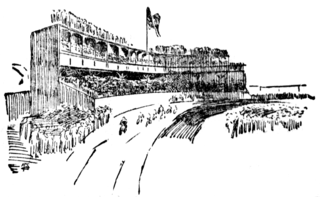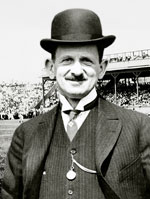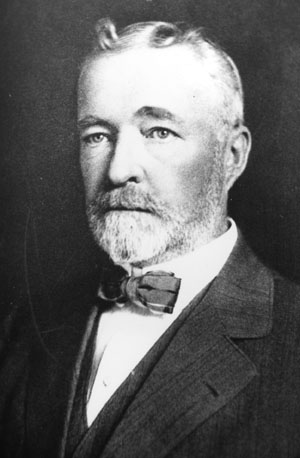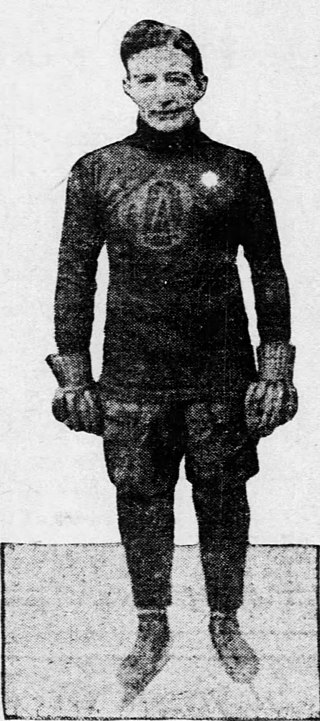Related Research Articles

The history of Pittsburgh began with centuries of Native American civilization in the modern Pittsburgh region, known as "Dionde:gâ'" in the Seneca language. Eventually, European explorers encountered the strategic confluence where the Allegheny and Monongahela Rivers meet to form the Ohio, which leads to the Mississippi River. The area became a battleground when France and Great Britain fought for control in the 1750s. When the British were victorious, the French ceded control of territories east of the Mississippi.

Greenfield is a neighborhood in Pittsburgh, Pennsylvania, United States. It is represented on Pittsburgh City Council by Barb Warwick.

PNC Park is a baseball stadium on the North Shore of Pittsburgh, Pennsylvania. It is the fifth home ballpark of Major League Baseball's Pittsburgh Pirates. Opened during the 2001 MLB season, PNC Park sits along the Allegheny River with a view of the Downtown Pittsburgh skyline. Constructed of steel and limestone, it has a natural grass playing surface and can seat 38,747 people for baseball. It was built just to the east of its predecessor, Three Rivers Stadium, which was demolished in 2001.

Exposition Park was the name given to three historic stadiums, located in what is today Pittsburgh, Pennsylvania. The fields were used mainly for professional baseball and American football from c. 1879 to c. 1915. The ballparks were initially located on the north side of the Allegheny River in Allegheny City, Pennsylvania. The city was annexed into Pittsburgh in 1907, which became the city's North Side, located across from Pittsburgh's downtown area. Due to flooding from the nearby river, the three stadiums' exact locations varied somewhat. The final version of the ballpark was between the eventual sites of Three Rivers Stadium and PNC Park.

Recreation Park was a sporting grounds and stadium that stood from 1865 to 1905 in Allegheny City,Pennsylvania, which was annexed in 1907 and became the North Side region of Pittsburgh. The park was bounded by Allegheny Avenue, Pennsylvania Avenue, Grant Avenue, and Boquet Street.

Sports in Pittsburgh have been played dating back to the American Civil War. Baseball, hockey, and the first professional American football game had been played in the city by 1892. Pittsburgh was first known as the "City of Champions" when the Pittsburgh Pirates, Pittsburgh Panthers football team, and Pittsburgh Steelers won multiple championships in the 1970s. Today, the city has three major professional sports franchises, the Pirates, Steelers, and Penguins; while the University of Pittsburgh Panthers compete in a Division I Power Five conference, the highest level of collegiate athletics in the United States, in both football and basketball. Local universities Duquesne and Robert Morris also field Division I teams in men's and women's basketball and Division I FCS teams in football. Robert Morris also fields Division I men's and women's ice hockey teams.
Pittsburgh Yellow Jackets was the name of three separate ice hockey teams based in Pittsburgh, Pennsylvania. The original team was part of the United States Amateur Hockey Association (USAHA) from 1920 to 1925 and developed from predecessors dating back to 1915. After winning the USAHA Championship in 1924 and 1925, the ostensibly amateur Yellow Jackets turned fully professional and became the Pittsburgh Pirates of the National Hockey League. After the Pirates relocated in 1930 to play as the Philadelphia Quakers, a second Pittsburgh Yellow Jackets club played for two seasons in the International Hockey League, a minor professional circuit. A third Yellow Jackets team was organized at the amateur level in 1935 by John H. Harris and competed in the Eastern Amateur Hockey League before folding in 1937.
The Western Pennsylvania Hockey League (WPHL) was an originally amateur and later professional ice hockey league founded in 1896 and existing through 1909. Based in Pittsburgh, Pennsylvania, the league became the pre-eminent ice hockey league in the United States. It was the first league to openly hire and trade players.
The Pittsburgh Bankers were one of the earliest professional ice hockey clubs. The club was based in Pittsburgh, Pennsylvania and was a member of the Western Pennsylvania Hockey League, the first league to openly hire hockey players, from 1899–1904 and 1907–1909. The team played all of its games at Duquesne Garden, and was involved in the first known trade of professional hockey players.

The Pittsburgh Pirates were an early professional ice hockey club based in Pittsburgh, Pennsylvania and were members of the Western Pennsylvania Hockey League for the 1908 WPHL season. The team, and the league, played all of their games at Duquesne Garden. The Pirates made one of the first known trades of professional hockey players.
The Greensburg Athletic Association was an early organized football team, based in Greensburg, Pennsylvania, that played in the unofficial Western Pennsylvania Professional Football Circuit from 1890 until 1900. At times referred to as the Greensburg Athletic Club, the team began as an amateur football club in 1890 and was composed primarily of locals before several professional players were added for the 1895 season. In 1894 it was discovered that the team had secretly paid formerly Indiana Normal player, Lawson Fiscus, to play football and retained his services on salary. The team was the chief rival of another early professional football team, the Latrobe Athletic Association.
The PittsburghStars were a professional American football team based in Pittsburgh, Pennsylvania in 1902. The team was a member of the first National Football League, which has no connection with the modern National Football League. The league was a curious mixture of baseball and football, with two of the three teams sponsored by the major league baseball teams of the same names, and the Pittsburgh team suspected of being secretly financed by baseball's Pittsburgh Pirates. The Stars were managed by Dave Berry, previously the manager of the Latrobe Athletic Association professional football team.
The Philadelphia Phillies were a professional American football team based in Philadelphia, Pennsylvania in 1902. The team was a member of what was referred to as the National Football League—not to be confused with the National Football League of today. The whole league was a curious mixture of football players as well as baseball players who adapted to playing football. The Phillies were owned and financed by baseball's Philadelphia Phillies just as the owners of the Philadelphia Athletics financed their team, the Philadelphia Athletics. The Pittsburgh Stars made up the third team and was suspected of being financed by the Pittsburgh Pirates baseball team.
Pittsburgh is the second largest city in Pennsylvania, U.S.

The 1901 Homestead Library & Athletic Club football team won the professional football championship of 1901. The team was affiliated with the Homestead Library & Athletic Club in Homestead, Pennsylvania, near Pittsburgh. The team featured a lineup of former college All-Americans paid by Pittsburgh Pirates' minority-owner William Chase Temple.

William Chase Temple was a coal, citrus, and lumber baron during the late 19th and early 20th centuries. He was also a part owner of the Pittsburgh Pirates in Pittsburgh, Pennsylvania from baseball's National League of Professional Baseball Clubs, established 1876. He also established the Temple Cup, a silver trophy awarded to the winner of a best-of-seven, post-season Major League Baseball championship series that was conducted for four seasons in the National League, from 1894 to 1897. He became the first sole owner of a professional American football team, in 1898.
American football in Western Pennsylvania, featuring the city of Pittsburgh and surrounding areas, has had a long and storied history, dating back to the early days of the sport. All levels of football, including high school football and college football, are followed passionately, and the area's National Football League (NFL) team, the Pittsburgh Steelers, is consistently one of the sport's most popular teams. Many of the NFL's top stars have come from the region as well, especially those that play quarterback, earning Western Pennsylvania the nickname "Cradle of Quarterbacks".
The Western Pennsylvania Professional Football Circuit was a loose association of American football clubs that operated from 1890 to approximately 1940. Originally amateur, professionalism was introduced to the circuit in 1892; cost pressures pushed the circuit to semi-professional status from about 1920 through the rest of its existence. Existing in some form for 48 years, it was one of the longest-lived paying football loops to operate outside the auspices of the National Football League.

The Duquesne Athletic Club was a professional ice hockey team based in Pittsburgh, Pennsylvania that played for only one season in 1908–1909. It won the final championship of the Western Pennsylvania Hockey League (WPHL).
References
- 1 2 Townsend 1867.
- ↑ Neel, Gregg L. (December 1938). "Notes and Documents: Pittsburgh: An Address". The Western Pennsylvania Historical Magazine. 21 (4): 282–283.
- 1 2 3 4 5 6 Killikelly 1906.
- 1 2 3 "U.S. Newspaper Directory". Chronicling America. Library of Congress. Retrieved October 6, 2013.
- 1 2 3 4 5 6 Federal Writers' Project 1940: "Pittsburgh"
- 1 2 3 4 Davies Project. "American Libraries before 1876". Princeton University. Retrieved October 6, 2013.
- 1 2 3 American Almanac and Repository of Useful Knowledge for the Year 1832. Boston: Gray and Bowen. 1832.
- ↑ George H. Thurston (1888), Allegheny County's Hundred Years, Pittsburgh: A. A. Anderson & Son, OCLC 4173355, OL 6905087M
- 1 2 3 4 Pittsburgh Directory for 1815, Pittsburgh: James M. Riddle, 1815, OCLC 21956933, OL 24166640M
- 1 2 3 Population of the 100 Largest Cities and Other Urban Places in the United States: 1790 to 1990, US Census Bureau, 1998
- ↑ History of Pittsburgh and Environs. Vol. 2. American Historical Society. 1922. p. 57.
- 1 2 3 Nina Mjagkij, ed. (2001), Organizing Black America: an Encyclopedia of African American Associations, Garland, ISBN 978-0-8153-2309-9
- 1 2 3 4 Wilson 1898.
- 1 2 3 4 5 Scott 1908.
- ↑ "Conventions by Year". Colored Conventions. University of Delaware. Retrieved April 30, 2014.
- ↑ Aaron Brenner; Benjamin Day; Immanuel Ness, eds. (2015) [2009]. "Timeline". Encyclopedia of Strikes in American History. Routledge. ISBN 978-1-317-45707-7.
- 1 2 3 Fleming 1916.
- ↑ M. S. Vassiliou (2009). "Chronology". Historical Dictionary of the Petroleum Industry. Scarecrow Press. ISBN 978-0-8108-6288-3.
- ↑ Reiss, Steven A. (2006). Encyclopedia of Major League Baseball Clubs. Greenwood Publishing Group. pp. 299–300. ISBN 978-0-313-08306-8.
- ↑ Chamber of Commerce 1905.
- ↑ Decker, John. "Pittsburgh's First Minor League Team". Pirates Prospects. Archived from the original on November 29, 2014. Retrieved November 21, 2014.
- ↑ Paul S. Boyer, ed. (2001). Oxford Companion to United States History . Oxford University Press. p. 405. ISBN 978-0-19-508209-8.
- ↑ "Pennsylvania: Pittsburgh". American Newspaper Directory. George P. Rowell. 1884.
- 1 2 "Historical Chronology". Our History. Senator John Heinz History Center. Archived from the original on October 6, 2013. Retrieved October 6, 2013.
- ↑ Wm. P. Smull (1883). Smull's Legislative Hand Book and Manual of the State of Pennsylvania. Harrisburg.
{{cite book}}: CS1 maint: location missing publisher (link) - ↑ The Manual of Statistics: Stock Exchange Hand-Book, NY, 1912
{{citation}}: CS1 maint: location missing publisher (link) - 1 2 3 Mike Tigas and Sisi Wei, ed. (May 9, 2013). "Pittsburgh, Pennsylvania". Nonprofit Explorer. New York: ProPublica . Retrieved February 10, 2014.
- 1 2 U.S. Census Bureau, "Mini-Historical Statistics: Population of the Largest 75 Cities: 1900 to 2000" (PDF), Statistical Abstract of the United States: 2003
- 1 2 3 4 "Pittsburgh Chronology". Historic Pittsburgh. University of Pittsburgh. Retrieved December 30, 2013.
- 1 2 3 "Movie Theaters in Pittsburgh, PA". CinemaTreasures.org. Los Angeles: Cinema Treasures LLC. Retrieved October 6, 2013.
- ↑ "United States and Canada, 1900 A.D.–present: Key Events". Heilbrunn Timeline of Art History. New York: Metropolitan Museum of Art . Retrieved October 30, 2014.
- ↑ "Children Tie Up Pittsburgh Traffic", New York Times, April 23, 1913
- ↑ Patterson, Homer L. (1932), Patterson's American Educational Directory, vol. 29
- ↑ Nina Mjagkij (1994). Light in the Darkness: African Americans and the YMCA, 1852–1946. University Press of Kentucky. ISBN 0-8131-2801-3.
- ↑ "Pittsburgh Parks Conservancy" . Retrieved October 6, 2013.
- ↑ "History". Pittsburgh Foundation. Retrieved February 10, 2014.
- ↑ "Pittsburgh Strike", New York Times, October 22, 1946
- ↑ "On This Day", New York Times, retrieved November 30, 2014
- ↑ "United States". Art Spaces Directory. New York: New Museum. Archived from the original on October 4, 2013. Retrieved October 6, 2013.
- ↑ "NCGA Co-ops: Pennsylvania". Iowa: National Cooperative Grocers Association . Retrieved February 10, 2014.
- ↑ Pluralism Project. "Hinduism in America". America's Many Religions: Timelines. Cambridge, Massachusetts: Harvard University. Retrieved October 6, 2013.
- ↑ "About Sri Venkateswara Temple, Pittsburgh, PA". Penn Hills. Retrieved October 6, 2013.[ permanent dead link ]
- ↑ "History of the Food Bank". Duquesne, Pennsylvania: Greater Pittsburgh Community Food Bank. Archived from the original on October 31, 2013. Retrieved February 10, 2014.
- ↑ "Pennsylvania Food Banks". Food Bank Locator. Chicago: Feeding America . Retrieved February 10, 2014.
- ↑ Harry Henderson (2007). "Chronology". Artificial Intelligence: Mirrors for the Mind. NY: Infobase Publishing. ISBN 978-1-60413-059-1.
- ↑ "Pittsburgh Transit Strike Makes Commuters Scramble". New York Times. March 18, 1992. Retrieved October 6, 2013.
- ↑ "New Talks Set in Pittsburgh Newspaper Strike". New York Times. July 16, 1992. Retrieved October 6, 2013.
- ↑ "City of Pittsburgh Home Page". Archived from the original on December 2, 1998 – via Internet Archive, Wayback Machine.
- ↑ "About Us". Sustainable Pittsburgh. Retrieved February 10, 2014.
- ↑ "About". I Heart PGH. Retrieved February 11, 2014.
- ↑ "Thousands Attend Pittsburgh Tea Party". Harrisburg, Pennsylvania: Commonwealth Foundation. April 11, 2009. Retrieved October 6, 2013.
- ↑ "Pittsburgh". Hackerspaces. Retrieved February 10, 2014.
